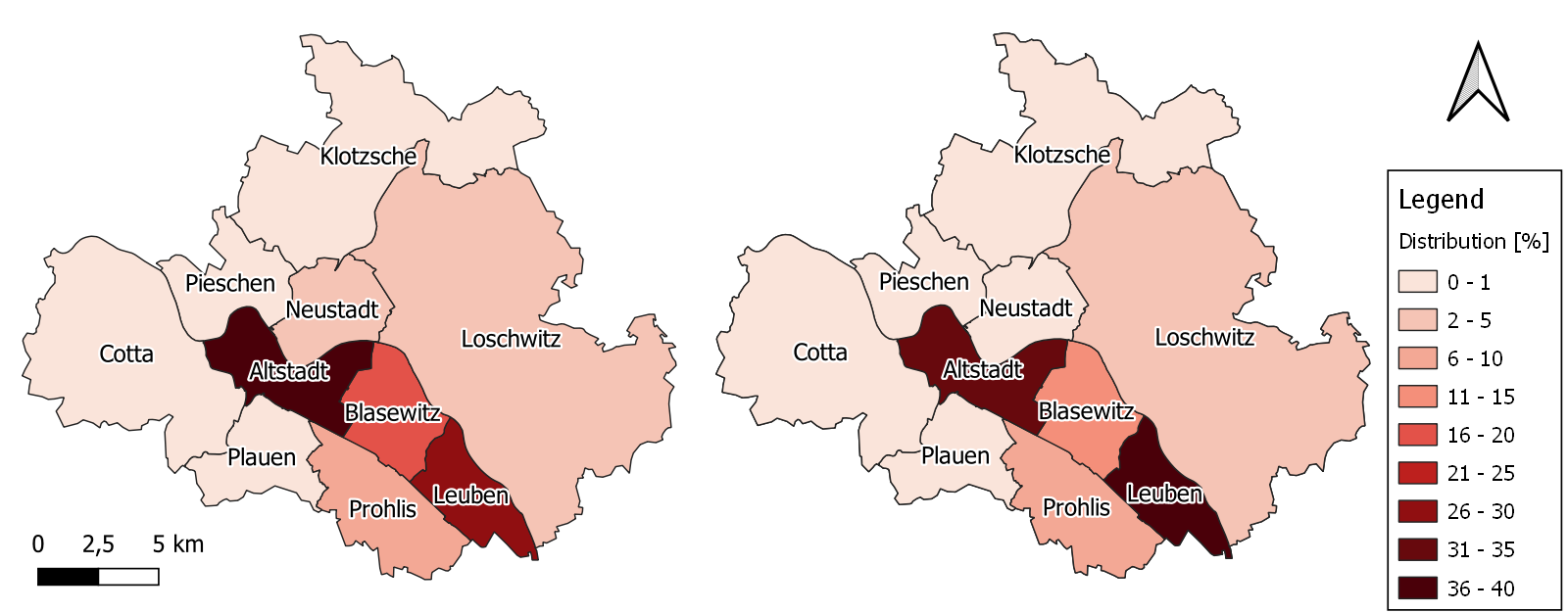How does the mobility behavior of private households differ in extreme situations?
In the near and distant future, an increase in extreme events is to be expected, both in terms of frequency and severity. Within the CEDIM project "Effects of extreme events on energy, information and mobility systems", changes in the mobility behavior of private households resulting from flood events are investigated. For this purpose, the district of Dresden-Laubegast, which is often affected by floods, was selected and a survey was conducted there.
The data collected can be used to evaluate the traffic volume (number of trips), the importance of trip purposes and modes of transport. For example, it can be seen that shopping trips become more important in the event of flooding, while leisure trips become less important.
The trip purposes correlate strongly with the spatial distribution of traffic. Overall, the data analysis in the flood case shows a stronger concentration of traffic activities with short distances. This is especially true for trip purposes that offer a variety of choices like shopping and leisure trips. The left part of Fig. 1 shows the distribution of destinations in the normal case, the right part in the flood case. While in the normal case already more than a quarter of all trips go to the major district of Leuben (to which Laubegast belongs), this share rises to 36 % in the case of flooding. On the other hand, the share of trips to the historic city center (“Altstadt”) drops from 39 % to 35 %, and that to the neighboring major district of Blasewitz from 17 % to 12 %.
The concentration on the local area is also reflected in the choice of transport modes. Walking and cycling become more important in the event of flooding, while the car and public transport become less important. The strongest effects are observed on walking and car trips: While walking increases by 21 percentage points to 49 %, the share of car travel falls by 21 percentage points to 15 %.
The next step is to find out which findings from this survey can be transferred to future flood events in Germany and which preconditions must be met to make this possible, e.g., requirements concerning data. The aim is to use the results for Dresden-Laubegast for estimating the potential effects of future flood events in other German cities.
Project page to the survey (only German)

Fig.: Distribution of trip destinations by major districts in the normal case (left) and in the flood case (right).
Associated institute at KIT: Institute of Economics (ECON) – Chair of Network Economics (only German), Prof. Kay Mitusch
Author: Christina Wisotzky (Dec. 2021).

